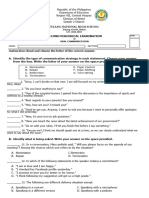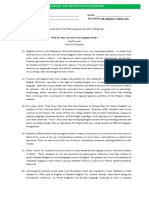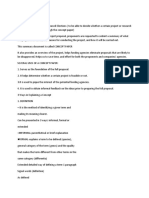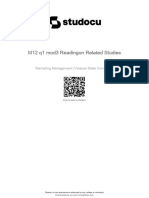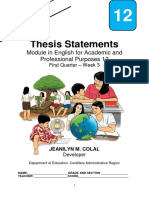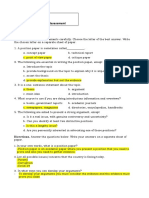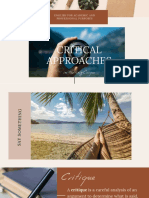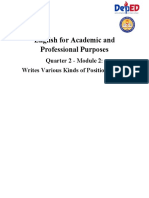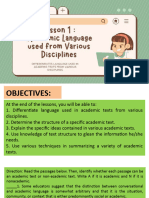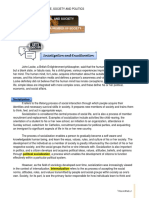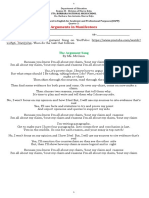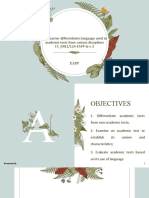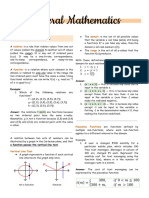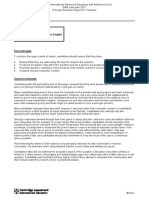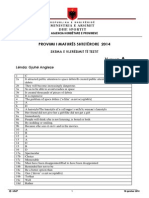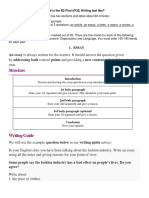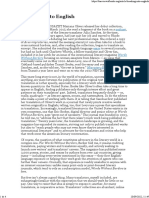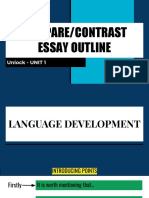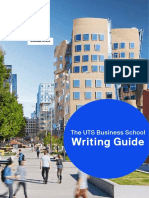0% found this document useful (0 votes)
364 views7 pagesEAPP Lesson Outlining
The document discusses outlining as an organizational skill that helps develop clear and logical thinking. An outline summarizes the most important information in a text in a hierarchical structure using Roman numerals, capital letters, and Arabic numerals. Outlines have two key benefits - they synthesize important information for readers and provide an organizational structure to ensure writers adequately support their points.
Uploaded by
Marc Alquin CantoCopyright
© © All Rights Reserved
We take content rights seriously. If you suspect this is your content, claim it here.
Available Formats
Download as PDF, TXT or read online on Scribd
0% found this document useful (0 votes)
364 views7 pagesEAPP Lesson Outlining
The document discusses outlining as an organizational skill that helps develop clear and logical thinking. An outline summarizes the most important information in a text in a hierarchical structure using Roman numerals, capital letters, and Arabic numerals. Outlines have two key benefits - they synthesize important information for readers and provide an organizational structure to ensure writers adequately support their points.
Uploaded by
Marc Alquin CantoCopyright
© © All Rights Reserved
We take content rights seriously. If you suspect this is your content, claim it here.
Available Formats
Download as PDF, TXT or read online on Scribd
/ 7




